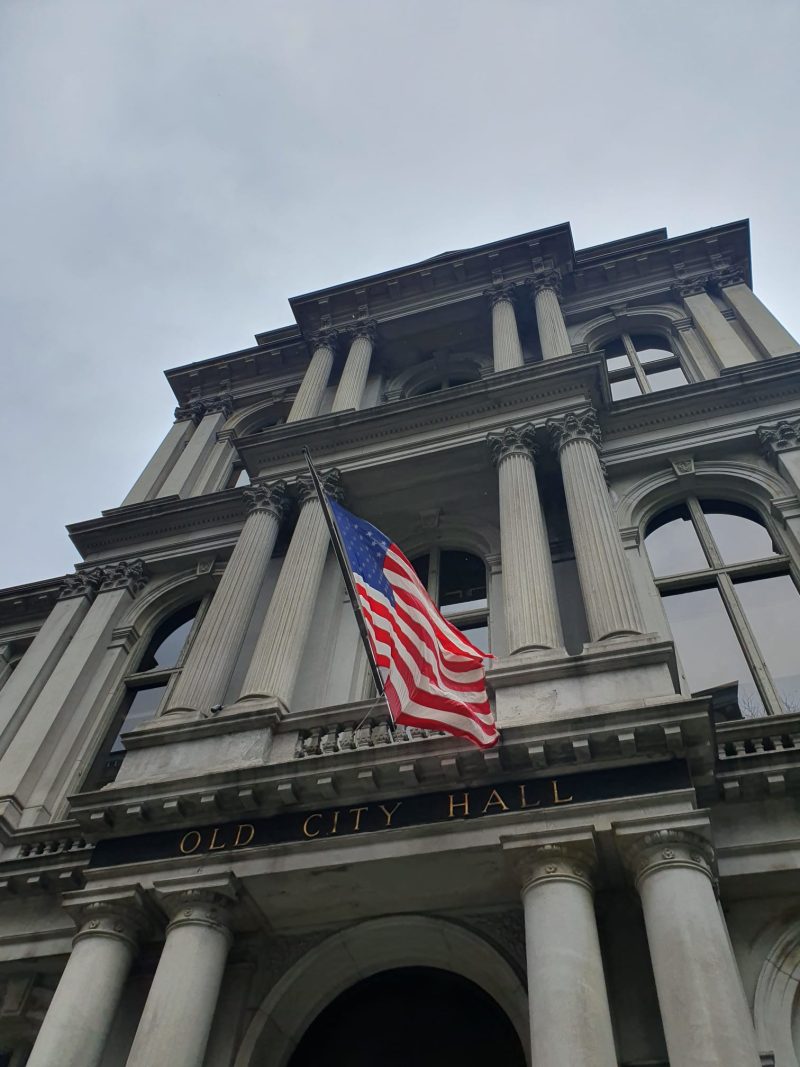
Walk the Freedom Trail!
Hello and welcome to my next blog!
One of the things I most love about Boston is the city’s connection to American history and the amount of historically significant sites. It is even known as being the birthplace of the American Revolution! A trail connects several of the most important historical places in the city and a couple million tourists yearly follow the signs and tour guides to learn more about Boston and its role in American history. So follow me along on the famous Freedom Trail!
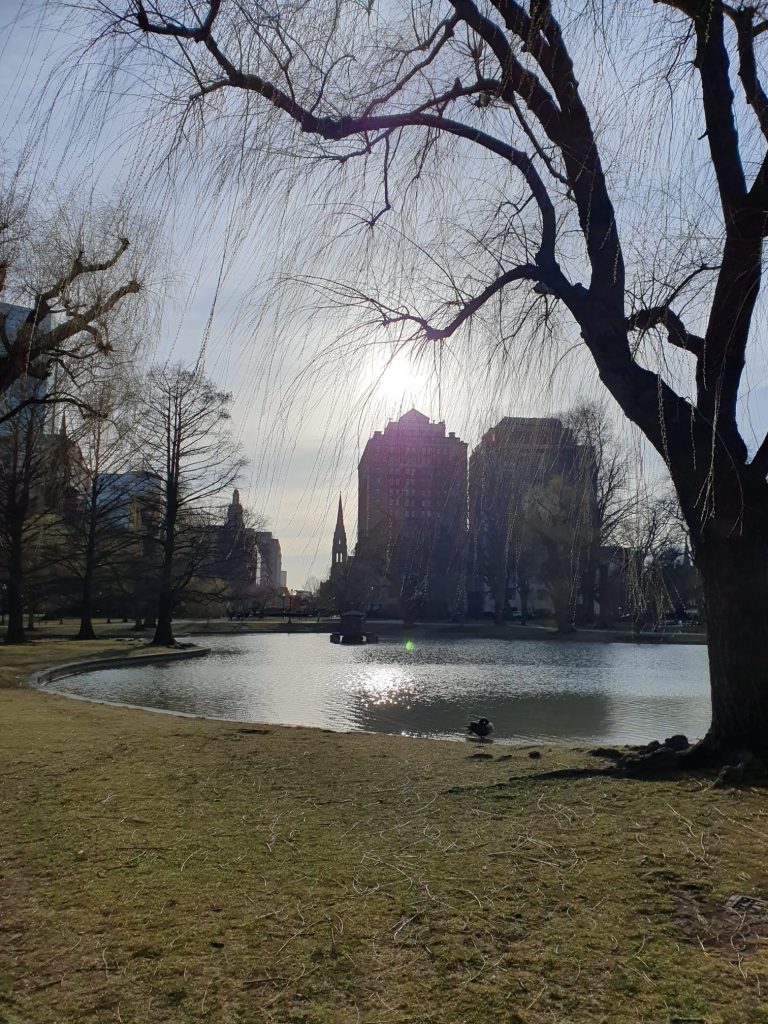
The Start
But how to walk the Freedom Trail? Several companies and organizations offer tours of the whole or part of the Freedom Trail, many of them starting in the Boston Commons and some of them even with guides dressed in costumes likening the clothes worn during the time of the American Revolution. The best thing is that some of the walking tours are free!
Personally, I prefer going on guided tours because the guides often bring their personality into the tour which makes the history more fun. Often, they also know a lot of fun facts about the city and the stops along the trail. However, for those who prefer exploring in their own time and pace, the Freedom Trail is marked by a red brick line on the ground (like Dorothy’s yellow brick road to Oz, just in red 😉). There are even free brochures available in the city center so you can read up about the sites along the way.
Sites Along the Freedom Trail
The 2.5 mile (approximately 4 km) long Freedom Trail begins in the Boston Commons, the city’s large park in the city center and also the oldest public park in the whole country! Despite its peaceful atmosphere, in the past many prominent figures including Martin Luther King Jr have spoken here.
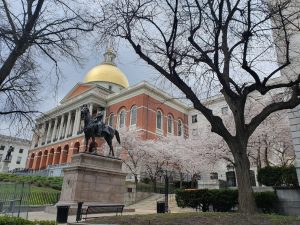
Next up is the State House at the top of the Commons, with an impressive golden dome you cannot miss. There are several statues nearby, including one of Mary Dyer, who was hanged in the Commons in 1660. She was seen as a fighter for religious freedom, fitting to the next stop, Park Street church. This is the place where, amongst other movements, the women’s suffrage movement was supported and the first anti-slavery protests were held. Next to the church is the Granary Burying Ground, the resting place of many prominent figures of the Revolutionary War like Paul Revere.
Once past the King’s Chapel and Burying Grounds as well as the Benjamin Franklin Statue, one comes to the Old Corner Bookstore, which is the oldest commercial building in downtown Boston. Previously, it housed the publishing giant Ticknor and Fields, which produced works such as Henry Wadsworth Longfellow’s “Midnight Ride of Paul Revere”.
The next stop along the way, the Old South Meeting House, was the location of a protest against British policies involving a third of Boston’s population and from where the colonists marched to the Boston Harbor to dump the chests of tea from the British ships into the water, an event which became known as the Boston Tea Party. Here, protests against the Boston massacre were also held, an event which took place at the centrally located Old State House, the next stop.
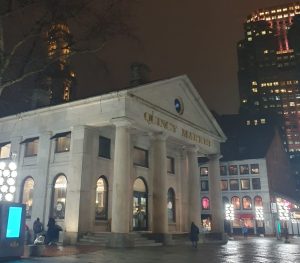
Next up is Faneuil Hall, one of America’s first public meeting houses and now home to a Visitor Center and souvenir shops. This is where some of the free tours end and I highly recommend trying some Bostonian specialties in the neighboring Quincy Market.
The Freedom trail is not fully over yet, however, and gradually snakes out of downtown Boston to the water. It leads past Paul Revere’s house, the oldest structure in downtown Boston, past the Old North Church which played a large role in initiating the American Revolution. A signal from it led to multiple riders, including Paul Revere himself, set off on horseback to warn people of the march of the British soldiers.
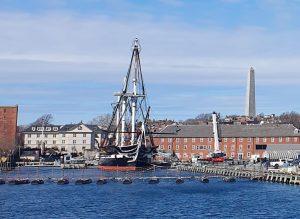
Once past Copp’s Hill Burying Ground, next up is the USS Constitution. This ship is amazingly still a commissioned US Navy warship, although launched in 1797.
The last stop on the Freedom Trail is the Bunker Hill monument, commemorating the battle of Bunker Hill, the first major battle of the American Revolution.
Credits for this history lesson go to the Freedom Trail official brochure and to the amazing tour guide I had!
Three Facts about Boston OR How History Isn’t Always Portrayed Right
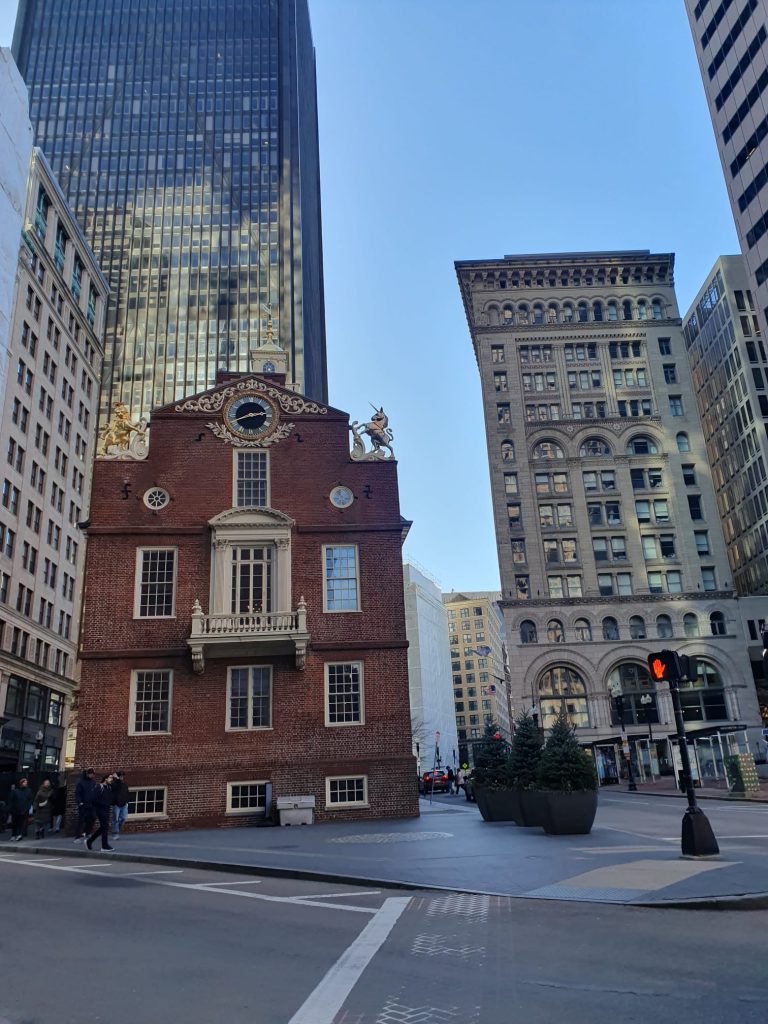
- The Boston Massacre site marker in front of the Old State House has been moved twice – both times from the center of the intersection. My tour guide said that, tragically, more people have actually died taking a picture on the site marker when it was still located in the center of the intersection than from the massacre itself.
- The Battle of Bunker Hill did not actually take place on Bunker Hill, but rather on Breed’s Hill, a hill nearby. Interestingly, Google maps directs one to the “wrong” bunker hill, Breed’s Hill, where the monument for the Battle of Bunker Hill is located, when one types in Bunker Hill.
- Now a fun fact about Harvard, more specifically about the statue of John Harvard, also known as the Statue of Three Lies. The inscription reads: “John Harvard, Founder, 1638.” But what is wrong? Well, John Harvard did not actually found Harvard, Harvard was actually founded two years earlier and the statue depicts a Harvard student, not John Harvard.


0 kommentarer